The Art and Science of Bathing Birds for Wellness

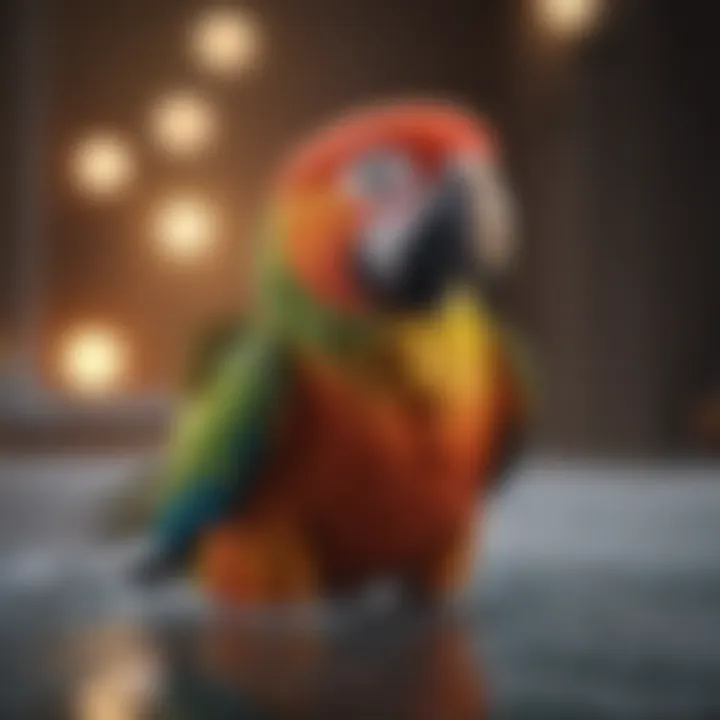
Intro
Bathing birds is more than just an occasional splash in the water; it's a vital practice that supports their overall health and happiness. For bird owners, understanding the intricacies of this task is essential. While it might seem straightforward, there are nuances that can make a significant difference in how a bird responds to bathing. The significance of keeping our feathered friends clean cannot be overstated; it affects their plumage, skin, and even their mood.
Birds, like any other pet, require specific care routines that cater to their unique needs. From the small finch to larger parrots, each species has its preferences and requirements when it comes to bathing. Understanding these distinctions, alongside the environmental setting needed for a successful bath, will transform an ordinary activity into a cherished ritual for both the owner and the bird.
This article seeks to cultivate a well-rounded understanding of avian bathing practices. We will navigate through care tips, behavioral insights, nutrition guides, wellness considerations, and enriching activities surrounding bathing. By the end, bird owners will not only build a better relationship with their pets but also empower them to flourish in their domestic environments.
Intro to Bird Bathing
Bathing is not merely a luxury for birds; it is a fundamental aspect of their well-being. When discussing the vitality of avian life, bathing stands tall as a non-negotiable practice affecting health, mood, and overall behavior. In many ways, a bird's joy can be found in the splashes of water—a reassuring reminder of living in harmony with nature.
Birds, like many creatures, require care and attention to thrive. Regular bathing allows for the removal of dirt, oils, and parasites that accumulate over time. It’s akin to brushing your hair or taking a shower—refreshing and revitalizing. Keeping their feathers pristine is critical, not just for their appearance but also for insulation and flight capability. A well-maintained plumage can make all the difference in their ability to soar through the skies.
Moreover, there’s more to bathing than just cleanliness. It promotes social behavior among flocking species, encouraging interactions as they see each other enjoying the water. This ritual can help reduce stress and anxiety, creating a sense of security. The act of bathing serves both practical and social needs; thus, it’s an essential feature in avian care.
However, it’s not always straightforward. Different birds have different preferences and requirements when it comes to their bathing practices. This is where understanding their anatomy and physiology takes center stage.
Importance of bathing
The significance of bathing for birds can be broken down into a couple of core areas:
- Health benefits: Regular bathing keeps feathers clean and free from debris, reducing the risk of skin irritations and infections.
- Behavioral advantages: Birds exhibit more natural behavior and better mood dynamics when given the opportunity to bathe.
- Environmental enrichment: Introducing bathing into their habitat offers new experiences and stimuli, contributing positively to their lifestyle.
Thus, what might seem trivial can profoundly impact a bird's quality of life.
Understanding bird anatomy and physiology
A deeper understanding of bird anatomy reveals why bathing is so crucial. Unlike mammals, birds have a unique structure to their feathers and skin. Their feathers are covered in a delicate oil produced by a gland near their tails known as the uropygial gland. This oil serves numerous functions: it helps keep feathers waterproof, protects them from the sun’s harmful rays, and provides insulation against temperature changes.
When a bird bathes, they engage in a meticulous ritual involving the use of their beaks to spread this oil uniformly across their plumage. This not only keeps their feathers conditioned but also extends their lifespan. Furthermore, the act of immersing themselves in water allows birds to fluff up their feathers, ensuring insulation is even throughout.
Moreover, birds’ skin is thin and sensitive. Bathing can help to keep the skin hydrated and supple, avoiding desiccation. It’s also vital for flushing out parasites. These little nuisances can cause considerable harm if left unchecked.
Types of Birds and Their Bathing Needs
When it comes to the wellness of our feathered friends, understanding the bathing needs of different species is vital. Birds, like all creatures, have distinct habits, preferences, and biological traits that inform how they interact with water. Recognizing these nuances helps bird owners provide environments that cater specifically to their birds’ needs, promoting both physical health and psychological well-being.
Small birds and their habits
Small birds, such as finches, canaries, and budgerigars, typically thrive in environments that simulate their natural habitats. These birds often indulge in quick, frequent baths. Their bathing behaviors are somewhat instinctive, often characterized by splashing and light dipping in shallow water. Owners might observe their small birds hopping into a dish of water, fluttering their wings, and rolling about, all while chirping softly. This behavior serves as a natural outlet for maintaining feather condition and regulating body temperature.
It’s essential to use shallow containers, as small birds can easily get overwhelmed or stressed in deeper water. Frequency of baths should be at least several times a week, especially during hotter months. Always provide fresh, room-temperature water, as cold water can be a shock to their systems.
"Small birds often don’t need much water to freshen up, but the joy they take in a bath is essential for their emotional happiness."
Medium and large birds: Unique considerations
Medium and large birds, like cockatoos, macaws, and parrots, possess different bathing behaviors that often reflect their physiological size and nature. Primarily, these birds appreciate larger baths that allow them to spread their wings and immerse themselves fully. Unlike small birds, larger species often engage in much heavier and messier bathing rituals. They may prefer a larger tub of water or even a shower spray from a handheld sprayer — a technique many bird owners have found successful.
When bathing medium and large birds, temperature and humidity are particularly important. These birds thrive in warm, humid conditions because they hail from tropical environments. Providing a warm bath or shower can stimulate their natural instincts and keep them comfortable.
Consider adding elements like bath mats or textured surfaces in the bathing area. This adds security for birds while they enjoy their soak. Keeping a close watch during these bathing sessions is advisable, as larger birds can sometimes become a bit rambunctious.

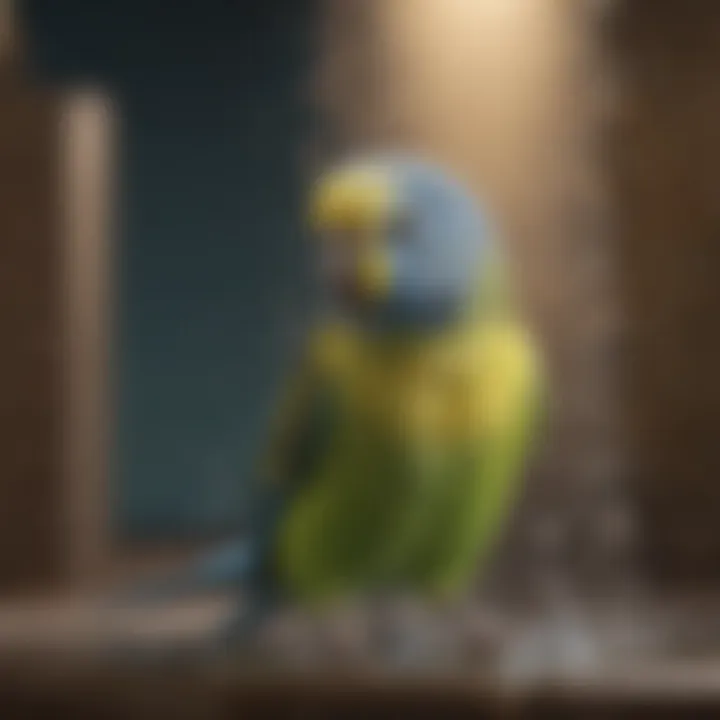
Aquatic tendencies in specific species
Certain birds exhibit unique aquatic behaviors. For example, species like ducks and certain types of herons display a deep affinity for water, reveling in submerged foraging and swimming. These birds often require a more immersive bathing experience, resembling their natural instincts. In caring for such birds, owners should ensure access to a body of water that is both safe and clean.
For those who have birds like waterfowl or finches with strong aquatic tendencies, a larger pond or specialized water feature can enhance their quality of life drastically. Providing such environments nurtures not just their bathing habits but also encourages organic behaviors that promote well-being.
In summary, different birds require tailored bathing experiences that reflect their natural behaviors. By observing these needs closely, pet bird owners can create enriching environments where their birds flourish.
Methods of Bathing Birds
In the realm of avian care, understanding the methods of bathing birds is crucial for promoting their overall health and well-being. Birds, like all pets, thrive in environments that cater to their natural behaviors. Bathing is not simply a luxury; it's a vital aspect of their self-care routine. Proper bathing techniques can aid in maintaining the integrity of their feathers, supporting skin health, and allowing them to express natural instincts. This section will delve into various methods, each catering to different bird species and preferences, identifying best practices that enhance the experience for both bird and owner.
Using water baths: Best practices
Water baths are perhaps the most common method among bird owners. Setting up an effective bathing regimen revolves around best practices that ensure safety and enjoyment. Here are several key considerations:
- Size Matters: Choose a bath that fits your bird's size. A small bird like a finch won’t feel secure in a large bowl, while a large parrot may require a spacious tub to prevent feeling cramped.
- Temperature Check: Make sure the water is lukewarm. Birds are sensitive to extremes; water that's too hot or cold can shock them.
- Environment Setup: Place the water bath in a quiet spot to minimize distractions. Birds are naturally susceptible to stress; a tranquil environment encourages them to engage with the bath.
- Frequency of Baths: Most birds appreciate a bath two to three times a week, but this can vary. Observing your bird's behavior helps to gauge their bathing needs.
Remember, a gentle and inviting water bath can transform this experience into a joyous occasion for your feathered friend.
Mist bathing: Techniques and benefits
Mist bathing is an alternative approach that can be particularly appealing for species requiring specific humidity levels or for those who feel uneasy around water. Using a spray bottle filled with distilled water can create a delightful mist that encourages cleanliness without overwhelming your bird. Here’s how to go about it:
- Right Timing: Mist bathing is best done during warmer parts of the day when your bird is most active. This also helps prevent chilling after a misting.
- Technique: Hold the bottle around two feet from your bird, gently spraying and allowing the mist to settle on their feathers without drenching them. Aim for a fine mist to mimic natural rainfall.
- Benefits: Besides cleanliness, misting can enhance humidity, aiding in feather health and skin hydration, which is particularly vital for drier environments.
Misting can not only keep your bird clean but it's also a fun way to engage with them and watch them preen and fluff their feathers.
Natural bathing opportunities: Outdoor practices
For those with access to a secure outdoor space, facilitating natural bathing opportunities can be incredibly beneficial. Birds in their natural habitats often bathe in puddles, streams, or during rain, and replicating this experience can be invaluable:
- Shallow Containers: Use shallow dishes of water placed strategically around your garden. Birds may instinctively approach for a drink or a splash.
- Stay Attentive: Always supervise your pet birds while they are outdoors to protect them from potential threats, such as predators or unsafe plants.
- Timing: The best times for outdoor bathing are after rain showers or during humid mornings, when the ground is moist and inviting.
Creating a space for birds to explore bathing in a more natural context promotes their instinctual behavior and helps them connect with their environment.
"Water isn’t just for drinking; it’s a playground for birds."
These methods are not just about keeping birds clean; they contribute to the holistic well-being of our feathered companions, making hydration, preening, and social interaction as accessible as possible.
Creating an Optimal Bathing Environment
Creating the right environment for bathing birds is not just an aesthetic concern; it’s about ensuring their health and comfort. By carefully selecting locations, monitoring temperature and humidity, and using appropriate supplies, bird owners can enhance their pets’ bathing experiences. A tailored bathing environment can foster a sense of safety, reduce stress, and positively impact their overall health. Here, we dissect the key components necessary to cultivate an optimal bathing area.
Selecting the right location
Choosing where to set up a bird bath holds more weight than one might initially think. First off, birds prefer to bathe in spaces that feel natural and secure. A spot near their living area allows them to feel protected from potential threats like predatory animals. Consider placing the bath in a quiet corner of a room or near a window where they can observe outside activity. If you’re outdoors, a semi-sheltered area under a tree could provide both safety and a chance for them to enjoy fresh air.
Light is another factor. Birds are drawn to spaces that receive a good amount of natural light, but not direct, harsh sunlight. While a sunny spot encourages bathing, too much direct exposure can lead to overheating. Thus, look for locations that offer dappled sunlight and enough shade.
Additionally, ensure the ground is stable. A firm base helps prevent accidents during splashy moments. Whether it’s a low table, your kitchen counter, or a solid outdoor stand, this consideration is crucial for a safe bathing experience.
Temperature and humidity considerations
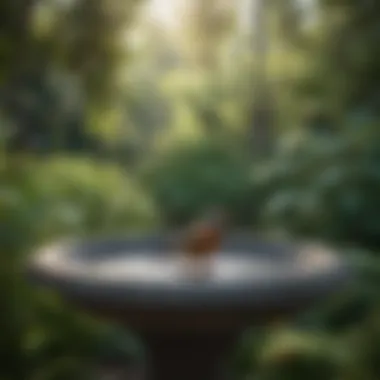
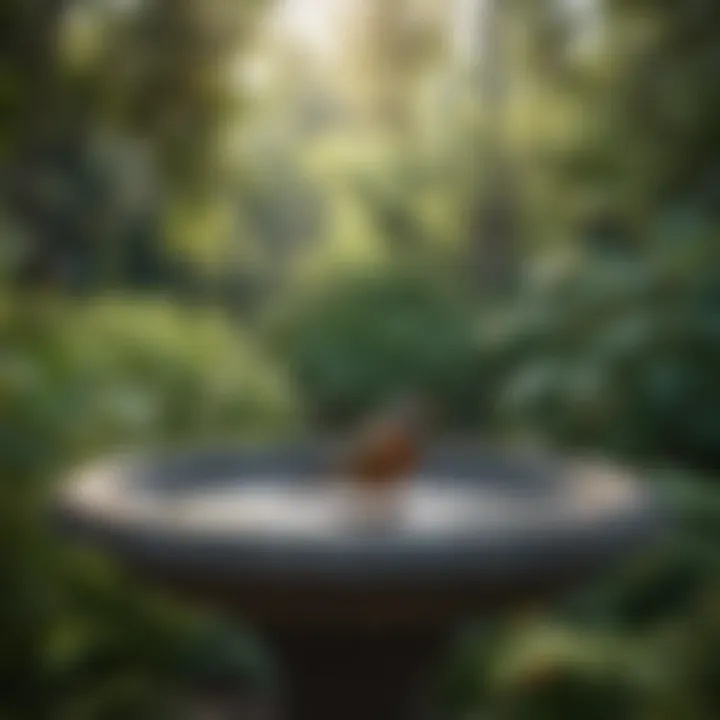
Temperature and humidity play a pivotal role in the bathing ritual. Birds prefer a moderate temperature range for their baths. Water that feels too cold may deter them from getting in, while water that’s excessively hot can be uncomfortable. Aim for a temperature that mimics their natural habitat, typically around room temperature or slightly warm.
Humidity is equally important. Birds thrive in environments that prevent their skin from drying out. Ideally, maintain a humidity level of around 40-60%. In overly dry surroundings, birds can suffer from dry skin, which might lead to irritation or feather problems. If you live in an arid climate, consider using a humidity gauge and a compatible humidifier to help achieve the right levels. Similarly, those in steamy conditions should ensure airflow, as poor ventilation can promote mold and bacteria growth.
Proper equipment and supplies
Equipping yourself with the right tools can significantly enhance the bathing experience for your feathered friends. Start with a shallow bath tailored to their size. A dish that’s too deep can make smaller birds anxious. For larger breeds, ensure the basin is sturdy and wide enough, allowing them to splash without containment worries.
Consider materials as well. Simple glass or ceramic options look appealing and are easy to clean, but avoid those that are too slick, which might pose slipping hazards. Accessories can also improve the bathing atmosphere. Plants or naturalistic decorations around the bath can provide a more comforting, nature-like setting.
Don’t forget about cleanliness. Regularly change the water to keep it fresh. Bird baths should be cleaned at least once a week to avoid the buildup of harmful bacteria. Utilizing non-toxic cleaning solutions ensures their safety.
Key Reminder: A clean bathing area is crucial for preventing health risks associated with harmful bacteria and mold.
The Benefits of Bathing for Birds
Bathing is not merely a luxury for our feathered friends; it’s essential for their overall well-being. Every bird species, whether petite parakeets or grand macaws, has its own bathing needs, and understanding these can lead to improved health and happiness. Embracing bathing rituals can foster a deeper bond between bird and owner, while also addressing various well-being concerns inherent to avian life. Here’s a closer look at the myriad advantages that regular bathing offers to birds.
Physical health benefits
Regular bathing contributes significantly to a bird’s physical health. Just like humans, birds have skin that can become dirty, oily, or scratched. These conditions can lead to discomfort or more serious ailments.
- Feather Maintenance: Water helps birds clean their feathers effectively. A well-maintained plumage ensures proper insulation and buoyancy. If feathers are matted or dirty, birds often struggle to maintain their body temperature, which can lead to stress and illness.
- Parasitic Prevention: Bathing can help in controlling parasites such as mites and lice which can latch onto birds. Keeping these pests at bay is crucial for long-term health. The act of bathing allows birds to dislodge and wash away these annoying little intruders.
- Hydration: Bathing can also aid in hydrating a bird's skin, preventing dryness, particularly important in low humidity environments. Dry skin can lead to discomfort and even lesions, ultimately affecting a bird's overall health.
"Regular bathing is a cornerstone in a bird’s proactive health care plan."
Impact on behavior and stress relief
Bathing is not just a hygienic practice; it serves as a significant source of behavioral enrichment for many species. Birds are naturally inclined to splash and play in water. This engaging activity can reduce stress and anxiety levels immensely.
- Natural Instincts: Many birds have an innate desire to bathe, imitating behaviors observed in the wild, where they depend on natural water sources. When provided with bathing opportunities, pet birds can express their natural instincts, which can contribute to their emotional well-being.
- Play and Exploration: For some birds, baths are an opportunity for exploration and play. This playful engagement fosters mental stimulation, preventing boredom, a common issue for birds that are domestically kept. Being intellectually engaged can help prevent behavioral issues such as feather plucking.
- Relaxation: After a refreshing bath, many birds display relaxed behaviors. They often preen their feathers thoroughly. This natural grooming ritual is crucial for a bird's mental state, allowing them to feel safe and secure in their environment.
Enhancement of plumage and hygiene
The aesthetic appeal of a bird's plumage is not just for show. It plays a vital role in a bird's health and social interactions. Regular baths contribute to plumage quality and overall hygiene in several ways.
- Vibrant Colors: A bird’s feathers can lose their luster without proper care. Regular bathing helps restore the brightness of colors, which can be important for attraction between mates or in establishing territorial dominance.
- Grooming Efficiency: Bathing helps birds preen effectively. Wet feathers allow them to straighten and align their downy layers, crucial in maintaining insulation. This enhanced grooming leads to healthier feathers that support flight and functionality.
- Odor Reduction: The act of bathing can help mitigate any undesirable odors that arise from natural oils or droppings. A cleaner bird is not just more pleasant to be around but is also less likely to attract unwanted attention from predators.
Common Challenges and Concerns
Bathing is an essential element of avian care, yet pet bird owners often face several obstacles that can hinder both the enjoyment and the benefits of this practice. Addressing these challenges is crucial, not only for maintaining the health of birds but also for nurturing the bond between the bird and its owner. By recognizing potential difficulties, bird guardians can make informed decisions, ensuring that their feathered companions experience the invigorating effects of bathing without undue stress or harm. This section will delve into key concerns regarding bird bathing, focusing on the three primary areas: fear of water, post-bathing drying, and health risks.
Fear of water and reluctance to bathe
It’s not uncommon for birds to hesitate at the sight of water. Many species, especially those not used to bathing, might perceive water as a threat or unfamiliar element. This fear can stem from past traumatic experiences or simply unfamiliarity. For instance, a small parrot, like a budgerigar, may freeze at the edge of a bath due to instinctual fears that something might emerge from the depths.
To ease this anxiety, patience is key. Start by introducing water gradually, perhaps using a shallow dish that allows the bird to get its feet wet without feeling overwhelmed. It’s often effective to model bathing behavior—placing your bird's favorite toy in the water can encourage curiosity. Moreover, using misting bottles creates a delicate curtain of water droplets, which can be less intimidating than full immersion.
Dealing with post-bathing drying
After a good scrub, be it in a bath or mist, birds must dry properly to avoid chilling. Unlike humans, who can simply grab a towel or a hairdryer, birds rely on their feathers to insulate them. A pet parrot might be feeling fresh after a bath, but it can also become susceptible to drafts or cooler temperatures.
To ensure effective drying, provide a cozy space with adequate warmth. A warm room with soft lighting can be the perfect setting. Avoid directly exposing them to heating elements, as this can cause more harm than good. Some bird owners choose to place their pets in sunny spots where they can preen themselves naturally. Preening helps fluff feathers back into place and ensures they are water-resistant, getting rid of excess moisture.
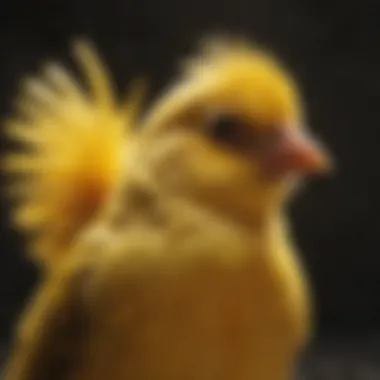
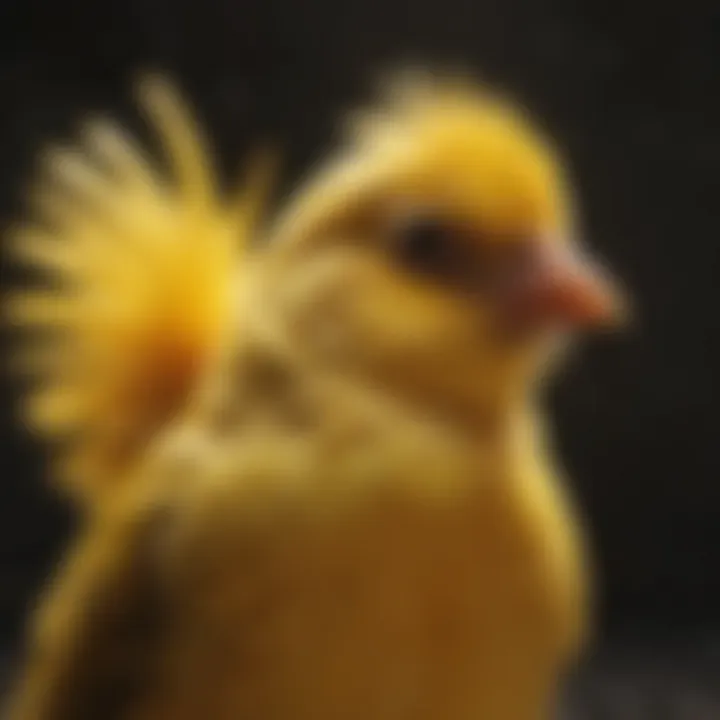
“Proper drying is as crucial as the bath itself; a cold bird is an unhappy bird.”
Health risks and precautions
With every wealth of knowledge comes responsibility, and bathing birds is no different. There's a fine line when it comes to ensuring the health of your pet bird during its bath time. One prominent worry is the potential for skin infections or fungal growth if birds remain damp for too long. Thus, ensuring they fully dry is paramount.
Additionally, it’s essential to use clean, chlorine-free water. Tap water can also contain harmful chemicals that might adversely affect birds. Furthermore, bird guardians should be vigilant about maintaining hygiene around bathing areas; stagnant water can become a breeding place for bacteria.
Here are a few precautions to keep in mind:
- Use only clean water: Always opt for sources that are free of contaminants.
- Limit bathing frequency: Too frequent baths can strip essential oils from feathers. A good rule of thumb is to bathe birds several times a week, depending on their individual needs.
- Monitor for signs of illness: After bathing, keep an eye out for any unusual behavior or physical symptoms that may suggest health complications.
Recognizing the common challenges and concerns of bathing birds can transform this practice into a joyous and beneficial ritual for both birds and their owners. The right approach makes all the difference, ensuring that bathing becomes a positive experience while safeguarding avian health.
Integrating Bathing into Daily Routines
In the realm of avian care, integrating bathing into daily routines is not just beneficial; it's a cornerstone of maintaining a healthy and balanced life for our feathered friends. Establishing a consistent bathing schedule is crucial in addressing the natural instincts of birds, as they often require regular access to water for both their physical and psychological well-being. Regular bathing can help prevent feather-related issues, reduce stress, and enhance the bond between bird and owner.
Frequency of baths: Recommendations
The frequency of baths can greatly depend on various factors, including the species of the bird, their environment, and the season. Here are some general guidelines to help you determine the best bathing schedule for your pet:
- Small birds such as finches may enjoy a quick rinse every couple of days. A shallow dish can work wonders.
- Medium birds, like cockatiels and parakeets, typically benefit from a bath once or twice a week, especially during warmer months.
- Larger species, such as parrots, often enjoy frequent baths, again depending on their coat condition and activity level.
It's important to ensure that the water is clean and free of contaminants. Watching the weather is also key; during hot days, birds may bathe more often to cool off, while colder seasons might necessitate fewer baths.
Observing bird behavior before and after bathing
Before introducing your bird to water, it's essential to observe their behavior. Birds can be creatures of habit, and understanding their preferences provides insight into how they might react during bath time.
- Look for signs of playfulness or excitement; these indicate a more positive attitude toward bathing.
- Conversely, if your bird displays signs of fear or reluctance, it might be useful to approach the bathing process gently. Gradually introduce them to the bath and ensure the environment is calm and welcoming.
After bathing, monitor their behavior closely. Most birds will shake off water vigorously, which is normal, but watch for anything unusual in their demeanor. Do they seem more relaxed? Are they preening? These are signs of a happy, clean bird.
Creating a ritual: Bonding through bathing
Bathing can be turned into a lovely bonding ritual. Establishing this routine can deepen your relationship with your bird. Here are a few ideas:
- Set a time for baths. Choose a specific time each week, perhaps Sunday mornings, to make it a special event. Your bird will start to expect and look forward to this time.
- Incorporate gentle songs or soothing music. Birds respond positively to sound, and creating a serene environment will make bath time feel like a mini retreat for both of you.
- Engage during bath time. Talk to your bird or offer gentle praise while they splash around. This interaction not only enriches their experience but also reinforces your bond.
"Bathing creates an opportunity for connection; it showcases care and attentiveness that our feathered friends thrive on."
Creating a ritual around the bathing process doesn’t just benefit hygiene; it weaves moments of joy into the daily life of your pet, making them feel loved and secure. Through these small, consistent practices, you foster an environment that empowers both you and your bird.
Finale: Fostering Bird Wellness Through Bathing
Bathing birds is not merely a luxury; it is a fundamental practice that contributes significantly to their overall wellness. Throughout this article, we explored the myriad benefits that come from regular bathing, which extends beyond just cleanliness. The act of bathing serves as a natural means for birds to maintain their feathers, promote good health, and even foster social behavior.
This practice allows birds to remove dust, parasites, and dead skin, which can cause skin issues and hinder their ability to fly effectively. Additionally, regular exposure to water can hydrate their skin and keep their feathers in pristine condition. In this concluding section, it is important to recap the key points and also encourage responsible ownership of pet birds.
Recap of Key Points
- Importance of Bathing: Regular baths are crucial for maintaining the physical health of birds and enhancing their quality of life.
- Behavioral Impact: Birds often display more vibrant behavior when they are adequately bathed and feeling good. Bathing can relieve stress and improve mood in birds.
- Varied Techniques: Depending on the species, different bathing methods may be necessary, from water baths to mist bathing and natural opportunities outdoor.
- Creating the Right Environment: Ensuring a safe and suitable bathing environment is key. The right location, temperature, and proper supplies can enhance the bathing experience for birds.
- Routine Integration: Making bathing part of the daily routine fosters a bond between pet owners and their birds and becomes a shared experience.
- Challenges and Choices: Recognizing and addressing common challenges associated with bathing, such as fear of water or post-bathing drying, is integral to maintaining bird wellness.
Encouragement for Responsible Bird Ownership
Owning a bird comes with great responsibility. Bathing should be seen as a part of an overall wellness routine that includes proper nutrition, social interaction, and a safe living environment. As potential bird owners, or those seasoned in avian care, it is crucial to understand the unique needs of each bird species. This understanding aids in providing a nurturing setting where they can thrive.
Birds are sensitive creatures that thrive in environments where they feel secure. When bathing is treated with care and consistency, it promotes a trusting relationship and helps owners observe any behavioral changes or health concerns.
Responsible bird ownership is about understanding that every action can impact a bird's well-being—through routine, we not just enhance their liveliness but also enrich our own lives.















